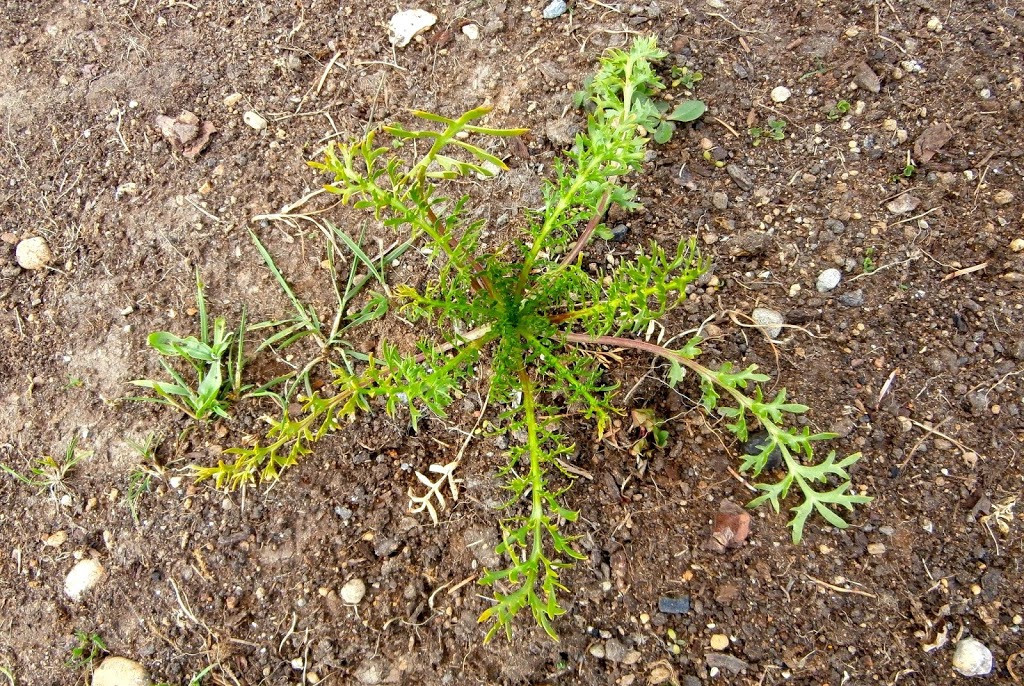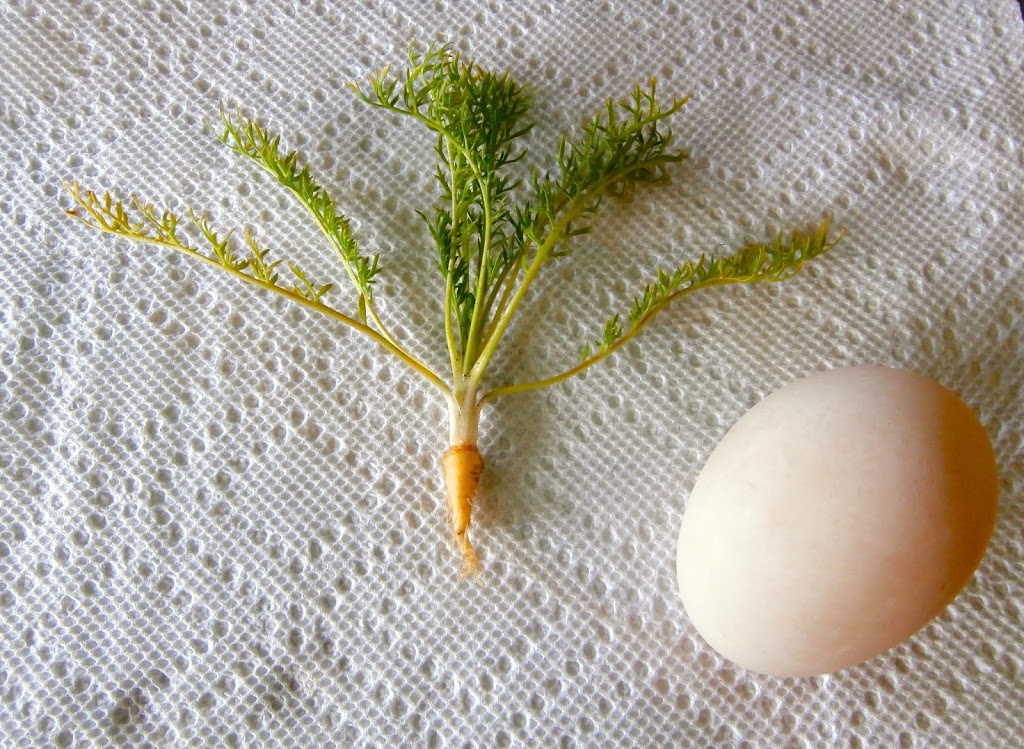Blog, maca (Lepidium meyenii)
Maca: Puny Plant from the Puna
As I have written previously, last year’s maca (Lepidium meyenii) was a disappointment, but this year is turning out better, at least so far. I credit that largely to discarding much of what I know about maca.
 |
| Maca plant with bonus weeds |
In its normal habitat, high in the Andes, maca stands largely alone. It is grown at altitudes up to 4,300 meters, which is about 14,000 feet for the metrically challenged. That’s high. For example, Mount Ranier is 14,411 feet tall and Mount Shasta 14,179. If you have ever been for a hike on either one (or, climbed them, you overachiever), or just observed them from nearby, you probably didn’t think to yourself, “Wow, what a great place for a farm!”
Lost Crops of the Incas, which is where I get most of my information about maca, has this to say about the prime maca farming region, the Puna:
The area where maca (pronounced mah -kah) is grown is an environment ofintense sunlight, violent winds, and bone-chilling cold. This area is among theworld’s worst farmland, especially in its upper limits, with vast stretches ofbarren, rocky terrain. Daily temperature fluctuations are so great that at sunsettemperatures often plummet from a balmy 18° C to 10° C below freezing. Fiercewinds evaporate more moisture than does the fierce sunlight, and carry awaymore soil than does the rain.
If you judge from Internet search results, there can’t be many people out there growing maca. Very little advice is available to the gardener and what little I found focused on trying to reproduce conditions somewhat like those described above. That is: dry and sunny without “overly rich” soil.
Well, I tried that, as best I could, and got a few unhappy plants that produced toxic-tasting radish-like roots. This year, I found I got much higher germination in soaking wet seed flats and I transplanted the seedlings in some lightly manured soil, in full sun, and let the rain fall. That was back in March and the plants have grown very slowly, but they have all survived.
 |
| Puny maca with duck egg for scale |
I pulled a plant yesterday in order to check growth and perhaps flavor, if there were anything to taste. As it turned out, they have started to put on a little root growth; enough for a tiny bite. I bit off the root and chewed it somewhat reluctantly after last year’s unpleasant experience, but my apprehension was soon relieved. This was a totally different flavor. At first, it was bland, but chewing produced first a hot mustard like flavor and then followed it with sweetness and something else that I can’t describe. It was really delicious – like a well balanced sweet/hot mustard. If maca always tasted like that, I would eat it all the time.
So, what accounts for the difference? I can only speculate, but mine may have been too large last year. LCotI says:
Except for the seed stock, all the roots are harvested, even the small ones. Indeed, the smallest are preferred, as they are less fibrous.
And better flavored, perhaps? It appears that maca ranges in size from 1-3 inches in diameter at harvest, or roughly the size of a salad radish to a small turnip. In the Andes, most maca is dried, not eaten fresh, so if there is a difference between the large and small types, they may be drying the larger ones and using the smaller for fresh eating. I have enough plants this year to keep trying them periodically throughout the season, so hopefully I will get a better idea of the right harvest size and time.
I have also read that the leaves are edible, so I gave them a try. Maca is a relative of cress and that fits. The leaves are an entirely inoffensive, if somewhat bland, salad green. Since they should still be alive by the time we harvest here, we may get a bonus crop of greens.
Still to early to tell if this crop will be worth the effort, but I am more optimistic. I’m actually developing some enthusiasm for breeding a low elevation maca. I’ll try to turn up some more seed sources over the winter in order to do some crossing next year.
Maca seed is sometimes available in our seed shop.

2 thoughts on “Maca: Puny Plant from the Puna”